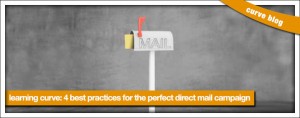For industry insiders, it comes as no surprise that SEO tactics used a decade ago—and in many cases safely used until recently—just don’t work anymore. With the rollout of Hummingbird in 2013, it became quite clear that Google was trending in a slightly new direction. Unfortunately for many, that direction was one that had many programmers, writers, analysts, Web managers, and business owners doing more than just a little freaking out. Since that Titanic moment, Google has changed its algorithm more times than ever before in its history (at least, as far as the public knows.)
As we face a new iteration of Penguin, rather than flipping our lids and swearing to never use anything but Ask.com again to create results, those who have been through game-changing shifts in Google’s backend have come up with some answers. Knowing more about the Penguin Algorithm than there is to know about the flightless arctic bird may be how you save your website, and subsequently, your return on investment when it comes to traffic, and ultimately, profits.
It certainly isn’t news that various Google algorithms have been focused on reducing spam. However, never have their efforts been more comprehensive. It’s important that developers and Webmasters know one thing for certain: contrary to its flightless arctic namesake, this Penguin flies.
A critical step in ensuring you don’t wind up in the ethers of the Internet, never to be “searchable” again, is to engage in a deep analysis of your site’s backlinks. Why? Because, of all the penalties you can get tossed in the proverbial digital slammer for, bad backlinks are analogous to felonies. While some other offenses are more misdemeanors, getting caught with sketchy backlinks is big, bad news for your site.
If you’re not sure how to check on your backlinks, it’s not difficult. Look at your Webmaster tools and download a list of backlinks. But don’t get it twisted: not all backlinks are bad links, and this is exactly why you’ll need to roll through a spreadsheet to delete those you know for sure are offenders. Once you’ve done this, you can take your remaining list of links and pop them into a backlink crawler, which organizes backlinks in a variety of ways, making it simple for you to see who gets to stay, and who’s got to go.
So the short version goes something like this: don’t intentionally build illicit backlinks. You can’t play hide and seek with Penguin—it will catch up to you and make you wish you followed the rules the first time. (Source)
(239)
![A Survivor’s Guide To The Google Penguin Update [Infographic]](http://cdn2.business2community.com/wp-content/uploads/2015/03/google-penguin-update19.jpg19.jpg)



